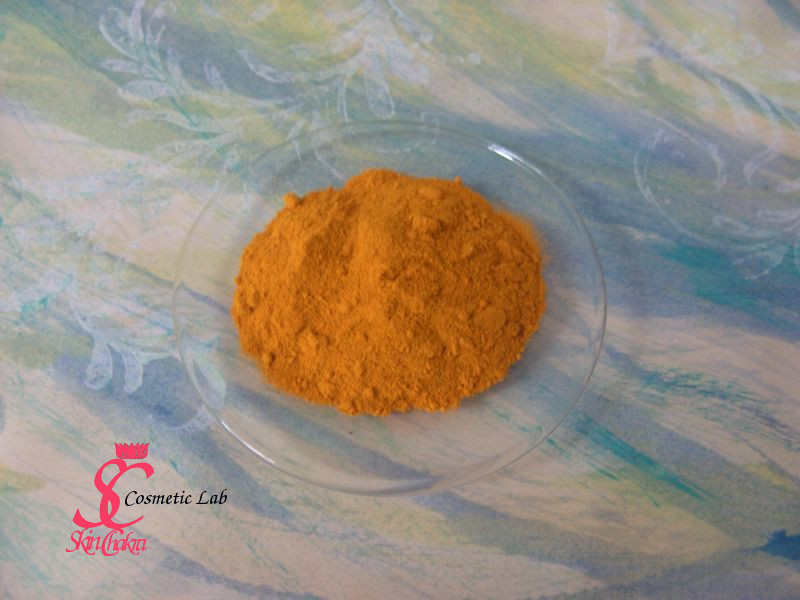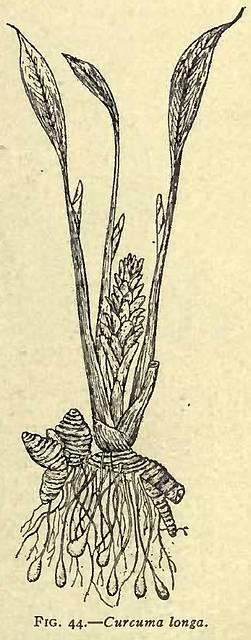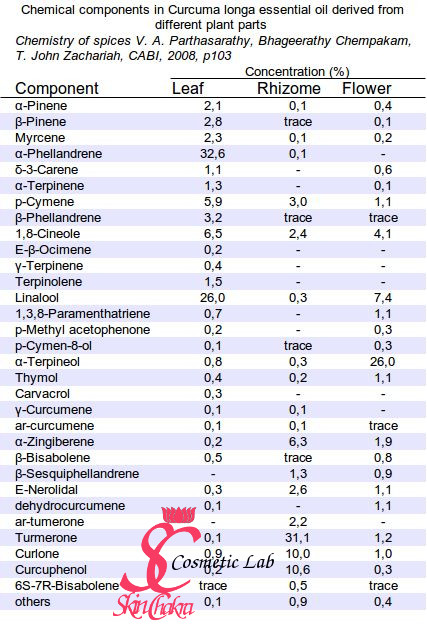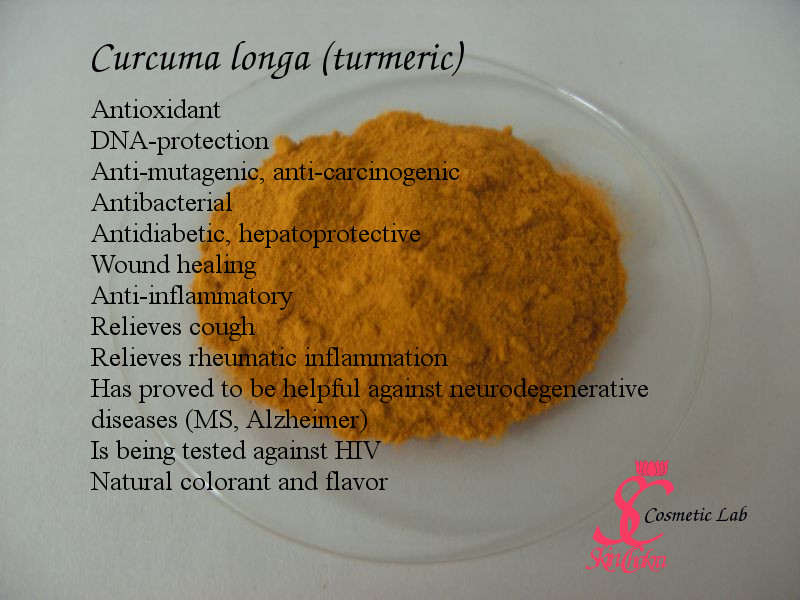
I wanted to write this post a long time ago but each time I procrastinated it by a (not very important) deviation.
Anyway, a discussion in a FB group and then finally this newly published article brought me finally to write this post.
I'm grown up with curcuma as an spice. Where I'm born and grown up, curcuma is a part of everyday cooking and it never fails in a kitchen. People do automatically apply it, specially by roasting onions which is the first step in almost every meal. Probably most of them don't know why they do it but they do it because their mothers and grandmothers have done it before.

Photo source:Sayre's Manual of Organic Materia Medica and Pharmacognosy, 1917
Curcuma longa is a root, very similar to ginger and it belongs to the same family: Zingiberaceae. If you've never seen the root itself you've probably seen the bright yellow powder in spice markets in the orient. It is a constituent of curry powder. Curcuma is insoluble in water but soluble in alcohol and oil. It adds a bright yellow color (very similar to saffron) and has a characteristic pleasant scent which is very different to that of saffron. Well Saffron is water soluble and oil insoluble. Apparently, curcuma is derived from kurkum, the Persian name for saffron [Royle, Essay on the Antiquity of Hindoo Medicine, p. 87.], but as a Persian native I can not confirm that. In many languages (as in German) it is simply called "yellow root", (Gelbwurz in German).
Although it is cultivated in many regions around the world from central America to Sri Lanka, almost 80% of the world consumption comes from India. Curcuma's history goes back to about 4000 years ago and to the vedic culture.
Curcuma is much more than a yellow colored spice, it has been an ingredient in ayurvedic and Chinese medicine for thousands of years. In India and Nepal for example it has been applied as a household remedy as a stomatic and tonic and to treat certain skin diseases. It is also an effective remedy against cough, diabetic wounds, rheumatism and sinusitis.
In the past decade curcuma has been a matter of interest in Western medicine. The number of published articles and patents based on curcuma confirms the growing interest around it both from a pharmaceutical and from cosmetic point of view.
It seems that certain constituent of curcuma perform excellent anti-inflammatory, anti-oxidant, wound-healing, anticancerous and antibacterial properties. Certain colorless extracts of curcuma are now being applied in mouthwashes and in oral hygienic because of its excellent antibacterial properties.
Curcuminoids, the color constituents of turmeric are susceptible to light and heat and both the powdered spice as well as the products containing it should be kept in light-safe packages. Turmeric is now being applied as a substitute to yellow colorants, specially tartrazine in food and cosmetic industry. For the typical scent the aromatic (ar-) turmerone is the main constituent. In addition to that d-sabinene, α-phellandrene, cineole, borneol and the higher-boiling sesquiterpene, zingiberene, α-turmerone, β-turmerone, α-phellandrene are found in the essential oil.
Both rhizome and leaves yield essential oils (5-6% rhizome and 1-1,5% leaves). The constituents of both should be very similar only the distribution is different. Basically the essential oil is prepared by steam distillation however the modern SFE method (supercritical fluid extraction by CO2) is being applied in certain cases to gain the essential oil.
Components in Curcuma longa essential oil (from Chemistry of spices, page 103)

Curcumin is the main colored component in the rhizome and is proved to prevent DNA damage and to perform antimutagenic/anticarcinogenic avtivity by dosages of 0.1-0.5% in diet.
In addition to that, curcuma contains polysaccharides and a water-soluble peptide "turmerin" which performs strong anti-oxidant and DNA protection activity.
Recent studies prove that ar-turmerone, the major component of the fragrance could be applied as a drug in neurodegenerative diseases such as MS and Alzheimer.
Curcumin and curcuminoids perform anti-inflammatory (both dermal and in rheumatism inflammations) and wound healing as well as strong anti-oxidant activity ( prevent oxidative damage to the arterial wall) as well as DNA protection.
Curcumin has not only antimicrobial activity (inhibits the growth of many Gram-positive and Gram-negatibe bacteria as well as fungi and some parasites), it has proved to inhibit formation of aflatoxins.
As if all that is not enough, curcumin has shown antidiabetic and hepatoprotective results in vitro studies.
Knowing all that, it's time to dedicate a special place in your spice rack to curcuma and to apply it in all your beauty products from massage oils to beauty masks and even as a colorant in your soaps.

References:
Chemistry of spices: V. A. Parthasarathy, Bhageerathy Chempakam, T. John Zachariah, CABI, 2008
Sayre's Manual of Organic Materia Medica and Pharmacognosy, 1917.
Royle, Essay on the Antiquity of Hindoo Medicine, p. 87.

Swettis Beauty Blog am : Curcuma & skin care